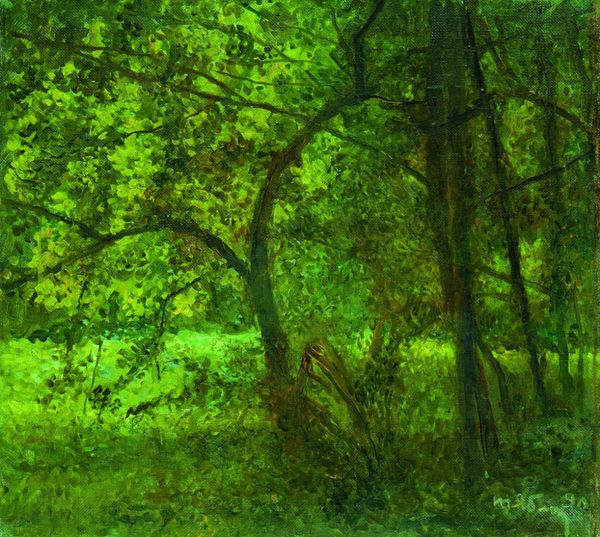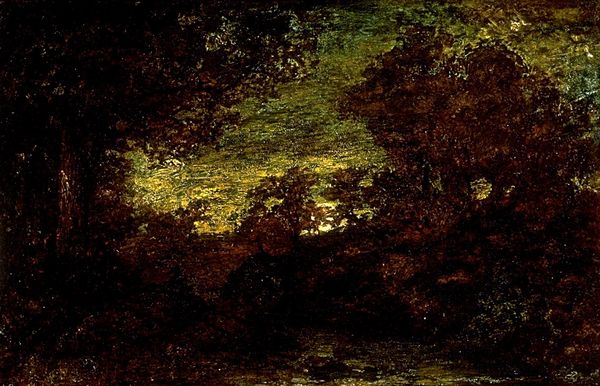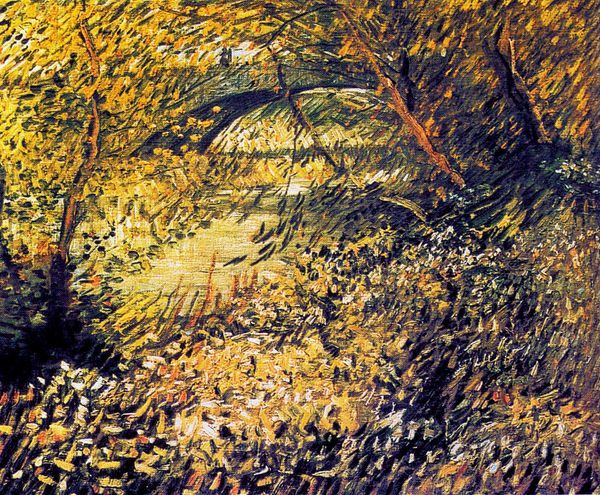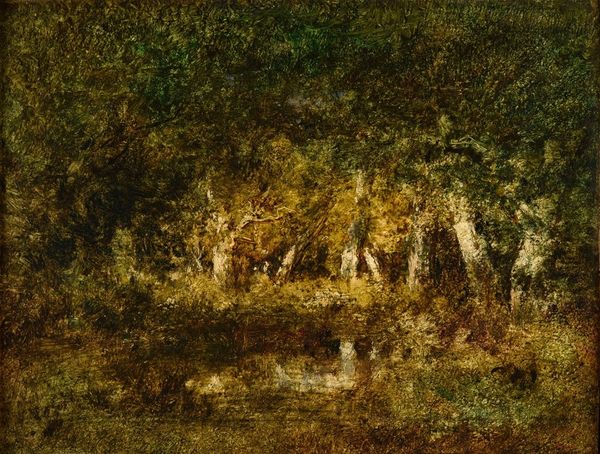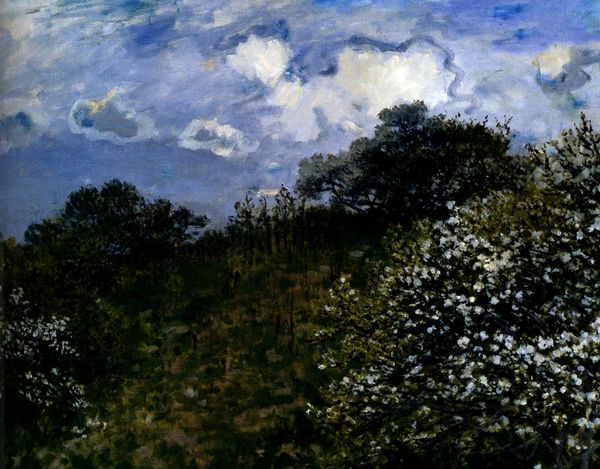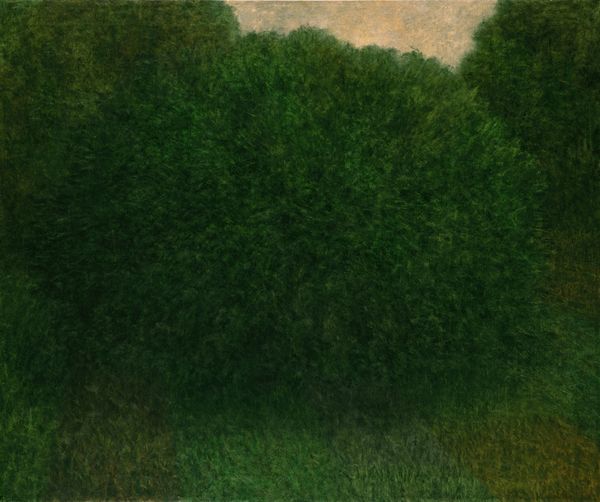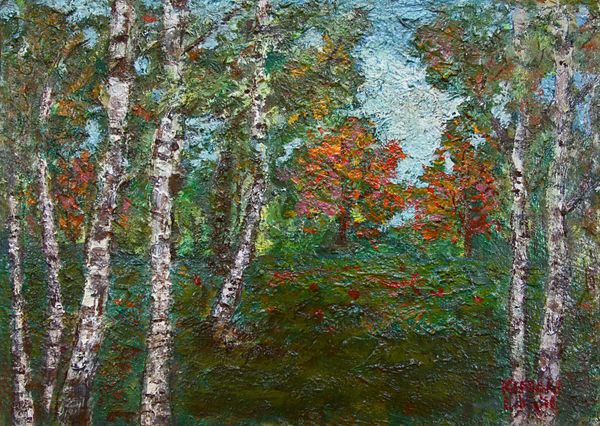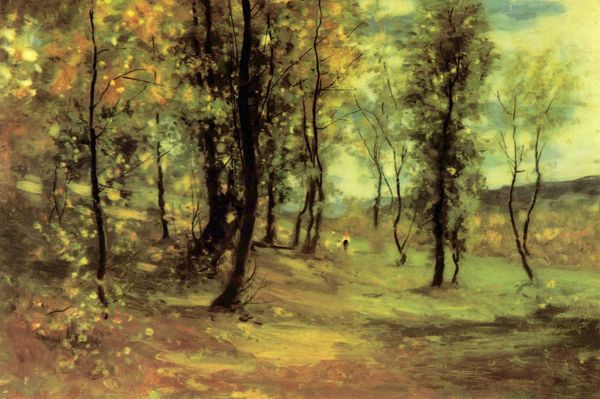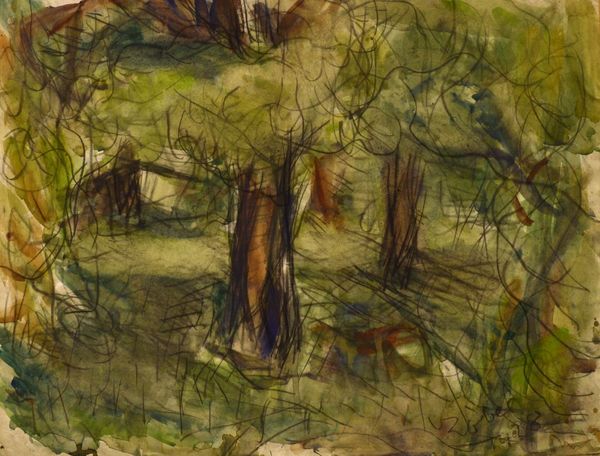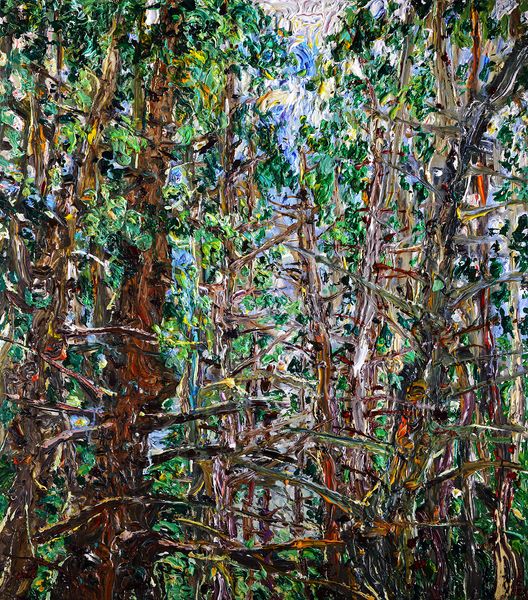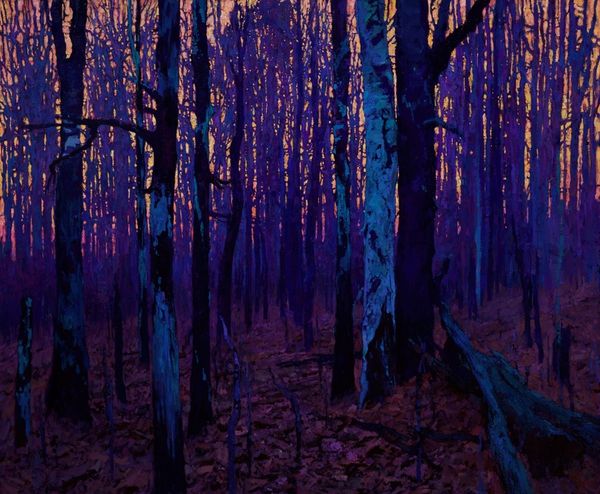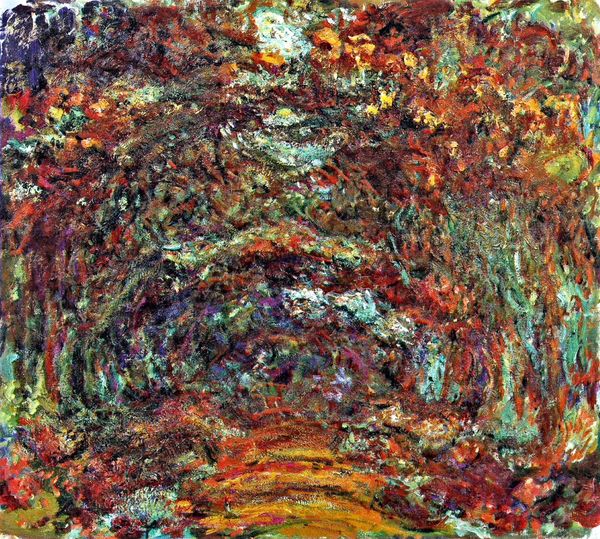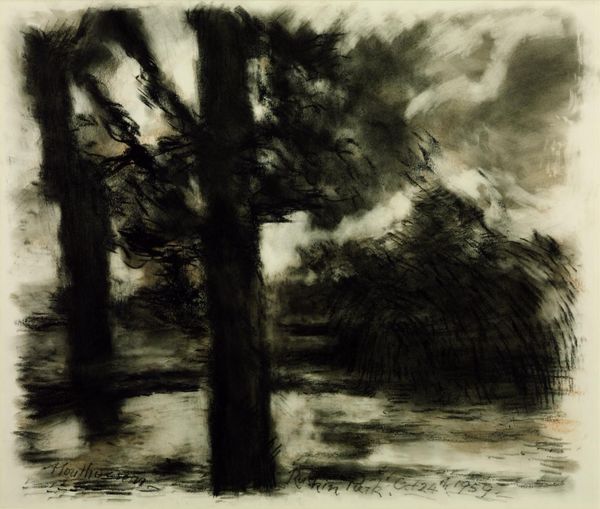
painting, acrylic-paint
#
tree
#
abstract-expressionism
#
abstract expressionism
#
painting
#
landscape
#
leaf
#
acrylic-paint
#
forest
#
abstraction
#
nature
Copyright: Kimon Loghi,Fair Use
Curator: I am immediately pulled in. It’s not just a night scene; it feels like the memory of a night, filtered through emotions and rendered with such intensity. The colors are almost feverish. Editor: Indeed, Kimon Loghi offers us, in "The Night," a glimpse into an abstract-expressionist landscape constructed with acrylic paint. It invites examination of the historical conditions which fostered its creation and dissemination, as well as a detailed look into its materials and production. Curator: Abstraction's the key, I think. We see "forest" and "trees" in the tags, but it’s how Loghi smears and daubs that paint. You can almost feel the thick impasto replicating the chaos and energy of a forest at night. It transcends the literal. Editor: It certainly begs consideration of the labor involved in its making. The visible texture highlights the artist’s physical engagement. How do those gestural strokes speak to larger systems of artistic production and value within the context of, say, mid-20th-century American art, or even the availability of acrylic paint at the time? Curator: That texture creates an almost tangible depth, as though one could sink into this dark world. It pulls me into the heart of a lived experience, or a remembered experience – slightly frightening, but also quite beautiful. Does the availability of acrylics imply that this kind of texture wouldn’t have been achievable earlier? Editor: Perhaps not in the same way. The affordances of acrylic, its drying time and consistency, inevitably shaped the application and therefore the aesthetic. How does that immediacy contribute to or detract from our reception of the 'natural' world the piece represents, and from the viewer? Curator: Detract, I think, isn’t the word here, unless, of course, the viewer desires hyperrealism. To me, this reminds one of how we reconstruct emotions surrounding our experiences, as though through a filter of thick pigment. Editor: So, we consider not only what is depicted but also the systems that allow and support that depiction, to better contextualize the piece and explore its significance as more than just a rendering. Curator: Exactly. In the end, “The Night,” is as much about Loghi’s emotional response to a place as it is an insight into the very act of remembering.
Comments
No comments
Be the first to comment and join the conversation on the ultimate creative platform.
